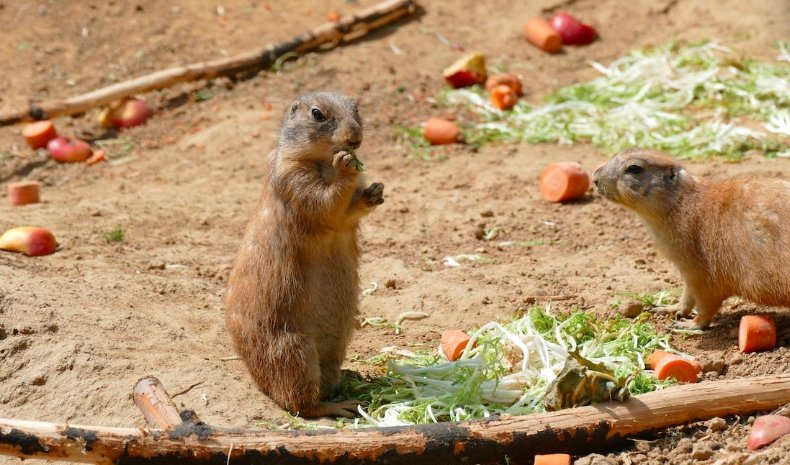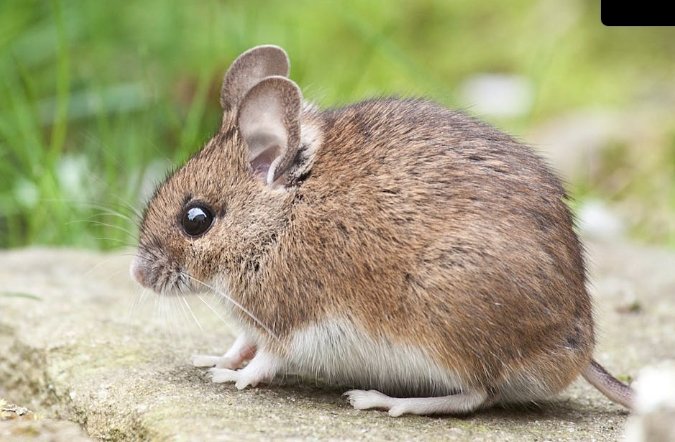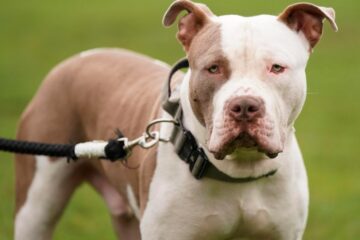Small Wonders: A Guide to Caring for Rodents and Small Animals is a comprehensive guide for caring for small animals. Small animals are animals that are smaller than cats and dogs, such as rabbits, guinea pigs, hamsters, chinchillas, mice, and rats. Small animals require special care and attention, and this guide provides readers with the necessary information to ensure their small animals are healthy and happy.
The guide starts by introducing readers to the basics of small animal care. It covers topics such as housing, diet, exercise and enrichment, grooming, health care, and common diseases. It also explains the importance of providing a stimulating environment and the importance of bonding with your small animal. Additionally, the guide covers the different types of small animals available, and how to pick the right one for your family. Finally, the guide provides tips on how to keep your small animal healthy and happy, including how to prevent and treat common illnesses.
Small Wonders: A Guide to Caring for Rodents and Small Animals is an essential resource for all small animal owners. It is packed with valuable information and tips on small animal care, which will help ensure that your small animal is healthy and happy. Whether you are a first-time small animal owner or an experienced one, this guide will provide you with the knowledge and resources you need to provide the best care for your small animal.

Choosing the Right Small Animal
Types of small animals
• Hamsters – Hamsters are small, cute animals that can make great pets for people of all ages. They are typically easy to care for, and come in a variety of breeds and colors.
• Guinea Pigs – Guinea pigs are social animals that make great companions. They are relatively easy to care for, and come in a variety of breeds and colors.
• Rabbits – Rabbits are social animals that love to be handled and cuddled. They are relatively easy to care for, and come in a variety of breeds and colors.
• Ferrets – Ferrets are active, curious animals that make great pets. They are relatively easy to care for, and come in a variety of breeds and colors.
• Mice – Mice are active, curious animals that make great pets. They are relatively easy to care for, and come in a variety of breeds and colors.
• Rats – Rats are social animals that make great companions. They are relatively easy to care for, and come in a variety of breeds and colors.
• Chinchillas – Chinchillas are active, curious animals that make great pets. They are relatively easy to care for, and come in a variety of breeds and colors.
Factors to consider when choosing a small animal
• Space – Small animals need a certain amount of space to live comfortably. Make sure you have enough space for the type of animal you are considering.
• Time – Small animals need a certain amount of your time to stay healthy and happy. Make sure you have enough time to devote to the animal before committing to it.
• Cost – The cost of a small animal can vary greatly, depending on the type of animal, the breed, and other factors. Make sure you understand the cost of keeping the animal before committing to it.
• Lifestyle – Small animals have different needs and personalities. Make sure you understand the animal’s needs and how they fit into your lifestyle before committing to it.
• Veterinary Care – Small animals require regular veterinary care to stay healthy. Make sure you know what kind of care the animal needs and what kind of veterinary services are available in your area before committing to it.
Characteristics of different breeds
• Hamsters – Hamsters come in a variety of breeds and colors, including long-haired varieties. They are typically easy to care for, and can be very active and playful.
• Guinea Pigs – Guinea pigs come in a variety of breeds and colors, including long-haired varieties. They are social animals that love to be handled and cuddled, and are typically easy to care for.
• Rabbits – Rabbits come in a variety of breeds and colors, including long-haired varieties. They are social animals that need plenty of space and stimulation, and are typically easy to care for.
• Ferrets – Ferrets come in a variety of breeds and colors, including long-haired varieties. They are active, curious animals that need plenty of space and stimulation, and are typically easy to care for.
• Mice – Mice come in a variety of breeds and colors, including long-haired varieties. They are active, curious animals that need plenty of space and stimulation, and are typically easy to care for.
• Rats – Rats come in a variety of breeds and colors, including long-haired varieties. They are social animals that need plenty of space and stimulation, and are typically easy to care for.
• Chinchillas – Chinchillas come in a variety of breeds and colors, including long-haired varieties. They are active, curious animals that need plenty of space and stimulation, and are typically easy to care for.
Small Animal Habitat
Choosing the right enclosure
The type of enclosure suitable for a small animal, such as a hamster, will depend largely on the size of the animal. Small animals, such as hamsters and guinea pigs, will need an enclosure with sufficient room for them to move around and explore. It is important to ensure that the enclosure is escape-proof, as small animals can often find ways to escape out of small spaces. Additionally, the enclosure should be made of material that is easy to clean and maintain, as small animals will often urinate and defecate inside the enclosure.
Temperature and humidity requirements
The temperature and humidity inside the enclosure should be kept within the range acceptable for the small animal in question. Generally speaking, temperatures should not exceed 25 degrees Celsius, and humidity should be kept at around 60%. It is possible to purchase a thermometer and hygrometer to monitor the temperature and humidity inside the enclosure, which can be especially useful if the enclosure is kept in a room that is not temperature controlled.
Bedding and substrate choices
The type of bedding and substrate used in the enclosure is also important. Bedding should be made of material that is safe for small animals, such as paper-based bedding, aspen shavings, or coconut fiber. Substrate can be anything from sand, to shredded paper, to hay. It is important to ensure that the material used is safe for the small animal, and does not contain any sharp edges or small particles that could potentially injure the animal.
Enrichment and toys
Enrichment and toys are also important for small animals, as they provide mental stimulation and help to keep the animals active and engaged. Toys can include anything from tunnels and exercise wheels, to tubes and chew toys. Additionally, the enclosure should be decorated with items such as branches and rocks, which will provide the animal with a sense of security and help to prevent boredom.
Feeding Small Animals
Types of Food:
Small animals like hamsters, gerbils and mice are omnivores, meaning they eat both plant and animal matter. A variety of foods can be fed to them, including fruits and vegetables, high quality commercial pellets, cooked lean meats, cooked eggs, and cooked grains. It is important to feed a variety of foods to ensure your small pet is receiving the necessary vitamins and minerals.
Frequency of Feeding:
Small animals should be fed once or twice a day. It is important to feed the same amount at each feeding, as overfeeding can lead to obesity and health problems. During each feeding, only enough food should be given that can be consumed in a few hours. The leftover food should be discarded.
Feeding Techniques:
It is important to provide fresh food and water daily and to clean the cage of any uneaten food and feces. Feeding dishes should be cleaned and disinfected weekly. It is also important to provide your small pet with items to chew, such as sticks and blocks, to keep their teeth healthy. Additionally, treats should be given in moderation as they are usually high in fat and sugar and can lead to health problems if consumed in large amounts.
Handling Small Animals
Safety Precautions:
• Always wash your hands before and after handling an animal.
• Wear protective clothing such as gloves or long sleeves to protect yourself from potential scratches or bites.
• If the animal is sick or injured, use extreme caution and seek professional help.
• Move slowly and calmly, and avoid sudden movements that may startle the animal.
• Never leave a small animal unattended.
Handling Techniques:
• Make sure to approach the animal from the side or from behind in order to not startle it.
• Speak calmly and gently to the animal and allow it time to get used to your presence.
• Support the animal’s body with your hands, controlling its head and legs to prevent it from escaping.
• If you are carrying a small animal, be sure to support its body and keep its head close to your body to protect it from injury.
Importance of Handling Small Animals:
Handling small animals is important for a variety of reasons. It is essential for providing proper care, such as administering medication and grooming. Additionally, it is important for building a bond between the animal and their handler. This can help improve the animal’s behavior and increase its trust and comfort level. Furthermore, it is important for teaching the animal to obey commands and perform tricks. By handling a small animal regularly, it will be easier to train them and get them accustomed to a routine.
Common Health Issues
Signs of Illness:
Common signs of illness can include a fever, fatigue, chills, coughing, sneezing, body aches and pains, nausea, vomiting, and diarrhea. Other symptoms can include shortness of breath, chest pain, and changes in your senses of smell or taste.
Preventive Measures:
To prevent the spread of common illnesses, good hygiene practices are essential. People should wash their hands frequently with soap and water, avoid touching their face, and cover their mouth and nose when sneezing or coughing. It is also important to practice social distancing, wear a face mask when in public, and get vaccinated when possible.
Treatment Options:
Treatment options for common illnesses depend on the specific disease or condition. Some common treatments include antibiotics, antiviral medications, over-the-counter pain relievers, and rest. In some cases, more aggressive treatments may be necessary, such as hospitalization, surgery, or chemotherapy. It is important to consult with a medical professional for proper diagnosis and treatment.
Small Animal Breeding
Outline Small Animal Breeding
• Breeding Considerations: Breeding small animals requires careful consideration of several factors, such as the animals’ health, genetics, and behavior. Animals should be selected for breeding based on these criteria, as some genetic traits and behaviors can be passed down to their offspring. Additionally, the environment and housing of the animals should be taken into account for the safety and comfort of both the parents and their offspring.
• Pregnancy and Birth: During pregnancy, small animals require special care and attention to ensure the health of both the expectant mother and her unborn offspring. It is important to monitor the mother’s health and provide her with a safe and comfortable environment during this time. During labor, the mother should be provided with a clean and comfortable area where she can give birth and nurse her young.
• Rearing and Socializing Offspring: After birth, the offspring need to be provided with a safe and secure environment where they can be monitored and cared for. It is important to ensure that the environment is suitable for their needs, as this will help to ensure the health and socialization of the young animals. Additionally, the young animals should be provided with adequate nutrition, as well as ample opportunities for socialization and play.

Legal Considerations
Owning small animals:
Different states and countries may have different laws and regulations when it comes to owning small animals. It is important to know the laws and regulations that pertain to owning small animals in the area you live in. Some of the laws that may need to be considered are licensing requirements, identification requirements, vaccinations and other health requirements, breeding requirements, and other regulations such as those related to animal safety and welfare.
Regulations for breeding and selling small animals:
When it comes to breeding and selling small animals, there are a number of regulations that need to be followed. These include regulations related to the sale of animals, such as the proper identification of the animal, the age of the animal, and the health requirements for the animal. There may also be regulations related to the breeding of animals, such as the health and safety of the mother and the offspring, the proper housing and care of the animals, and the proper disposal of any unwanted offspring.
Zoning and housing regulations:
In addition to the regulations related to the breeding and sale of small animals, there are also zoning and housing regulations that need to be considered. These regulations include the number of animals allowed on a property, the type of housing that is allowed, and the type of activities that are allowed to take place on the land. It is important to make sure that these regulations are followed in order to ensure the safety and welfare of the animals and to ensure that the land remains a safe and healthy environment.
Conclusion:
Small Wonders: A Guide to Caring for Rodents and Small Animals is a must-have manual for anyone considering adding a small pet to their family. The book provides clear information on how to select the right pet, the necessary supplies and care, and how to provide a safe, healthy and enriching environment for them. It also provides an in-depth look at the different types of small animals, their unique personalities and needs, and how to properly care for them. The book is a comprehensive guide to small pet care and is an invaluable resource for anyone wanting to give a small pet a good home. With the knowledge and information provided in this book, anyone can provide a safe, nurturing and loving home for small pets and give them the best chance of a happy life.
FAQs
1. What type of small animals are suitable as pets?
Small animals that make suitable pets include hamsters, gerbils, mice, rats, guinea pigs, chinchillas, hedgehogs, ferrets, and sugar gliders.
2. How do I care for a small animal?
Caring for a small animal requires providing a suitable habitat, food, and water, as well as adequate attention and exercise. It is also important to research the type of small animal you have chosen, as each species has different needs.
3. What type of food should I feed my small animal?
Small animals need a balanced diet that includes pellets, fresh fruits and vegetables, and hay. It is also important to provide a variety of treats, such as nuts and seeds, as well as plenty of fresh water.
4. How often should I clean my small animal’s cage?
It’s important to clean your small animal’s cage on a regular basis, at least once per week. Be sure to remove any soiled bedding or uneaten food, and replace it with fresh bedding and food.
5. Are small animals social animals?
Yes, many small animals are social animals and enjoy interacting with their owners. It is important to spend time with your small pet every day to ensure it is healthy and happy.
6. Do small animals need to be vaccinated?
Yes, some small animals, such as ferrets and rabbits, need to be vaccinated against certain diseases. Consult your veterinarian to determine which vaccinations your small animal needs.
7. How often should I take my small animal to the vet?
It is important to take your pet to the vet at least once per year for a check-up. However, if your small animal is showing signs of illness or injury, it should be taken to the vet as soon as possible.
8. How do I keep my small animal safe and secure?
Keeping your small animal safe and secure requires providing a secure habitat, such as a cage or hutch, and making sure all doors and windows are locked to prevent escapes. You should also supervise your pet when it is outside of its habitat.
9. What type of bedding is best for a small animal?
The type of bedding you choose for your small animal’s habitat depends on its species. Generally, it is best to use bedding made from wood shavings or paper-based materials. Be sure to avoid any bedding that contains cedar or pine, as these materials can be harmful to small animals.
10. Is it safe to handle my small animal?
Yes, it is safe to handle your small animal as long as you do so gently and carefully. When handling your pet, be sure to support its body and avoid holding it too tightly.


















